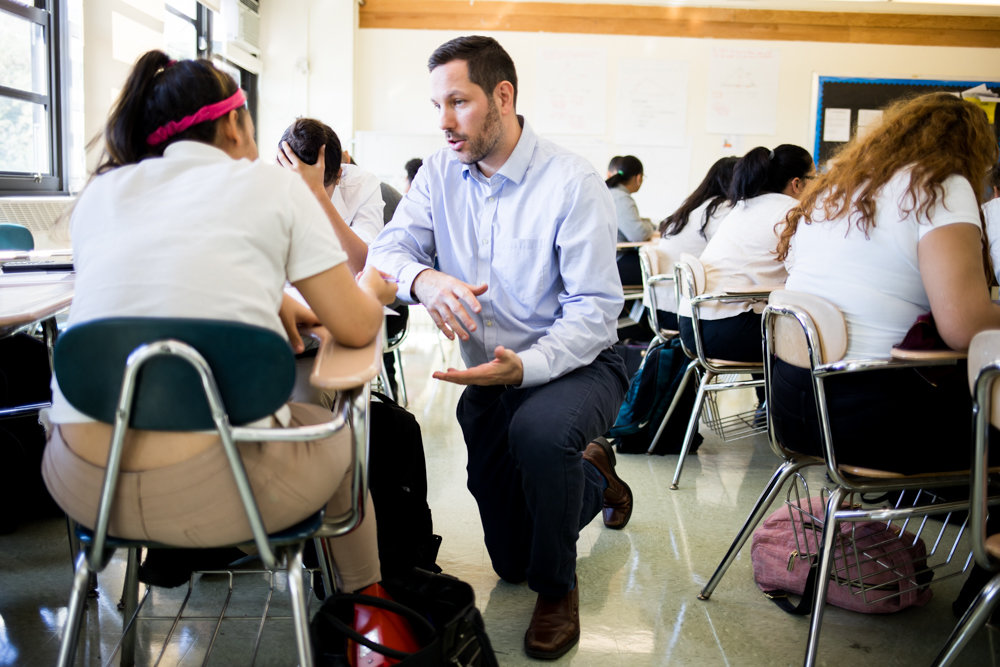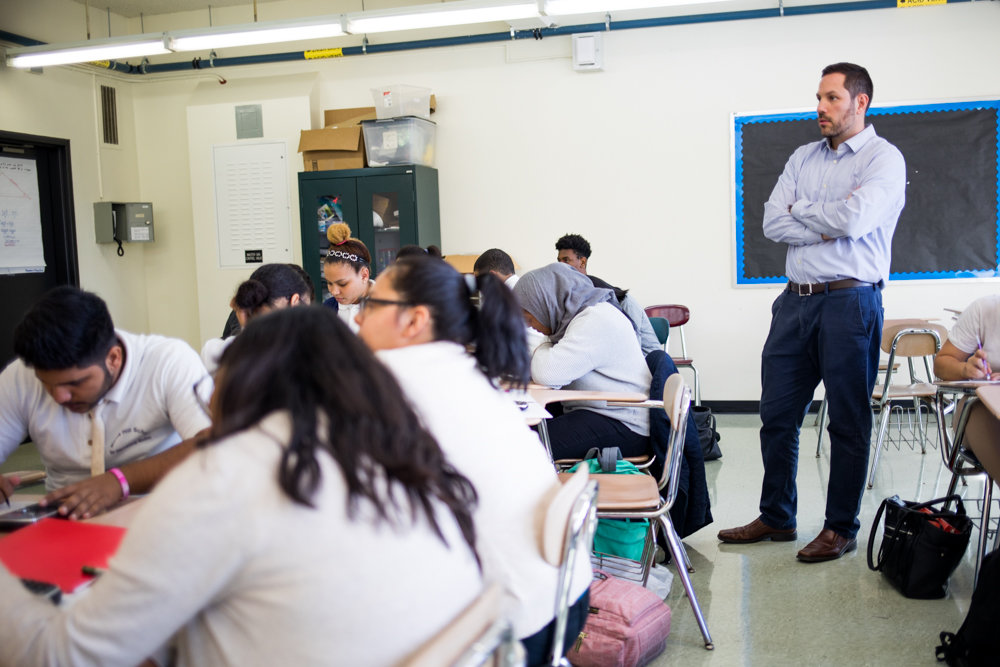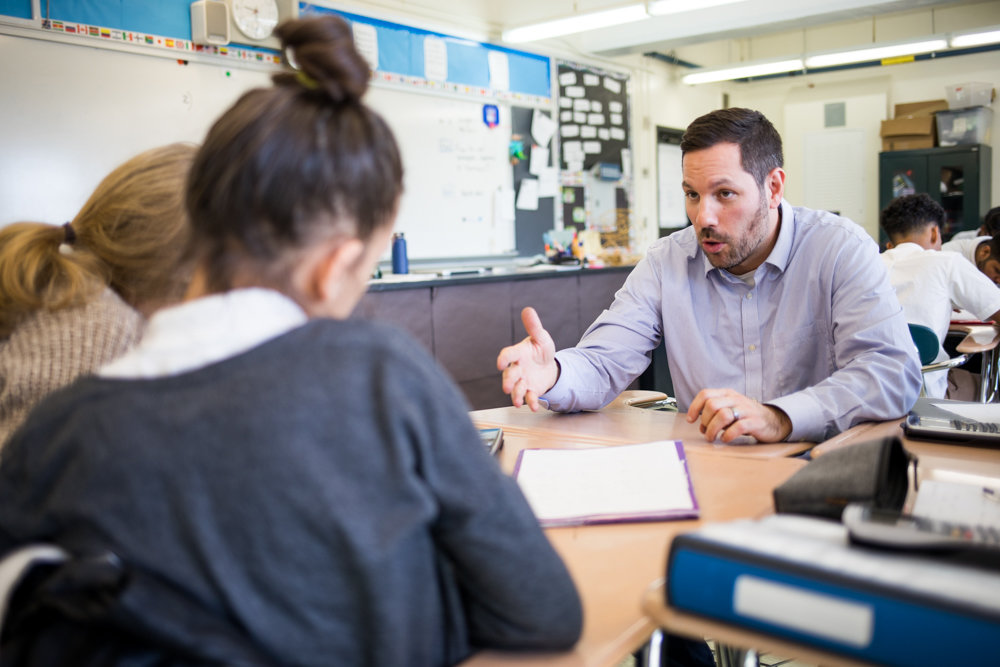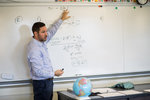MFA makes mathematicians out of model teachers
More than 200 teachers in the Bronx alone champion Math for America, an organization that says it pushes students to confront problems with the same curiosity and passion scientists like Galileo Galilei and Albert Einstein have shown in the past.
And as the new academic year began in September, the fellowship program bestowed 300 four-year fellowships in math, science, and computer science to New York City teachers like Jason Garofalo, who works at the Marble Hill School for International Studies.
“There are multiple rewarding aspects of the program, but the respect and recognition I would say — and the sense of importance that I get about my job are encouraging,” Garofalo said.
Garofalo has taught at the Terrace View Avenue school for the past 11 years. But surprisingly, he wasn’t always destined to be a math teacher. When he first entered Manhattan College as a freshman, Garofalo had his sights set on an engineering degree.
It wasn’t until he had the opportunity to teach disabled students during a summer educational camp that he decided to switch majors, graduating with a degree in psychology and a minor in math.
While he was in graduate school at Columbia University, Garofalo heard about Math for America for the first time. It was started by hedge fund manager Jim Simons in 2004, and has since grown.
“It was too late for me to go into their new teacher program, so I kind of had to wait to apply to their master teacher fellowship,” Garofalo said. “So I spent my first three years waiting for Math for America.”
In the meantime, Garofalo taught at different smaller schools throughout the city. When it came time to finally apply, Garofalo learned that there was more to the process than just submitting an application and a letter of recommendation or two. The selection process is extensive, requiring applicants like Garofalo to submit a large volume of information about his education, teaching style and so forth. He also had to submit several essays and lesson plans — all before actually acing a pair of math exams.
“I remember it being very stressful, and remember mailing it and dropping it off and just feeling a huge sense of relief,” Garofalo said. “It was also a very challenging process and it really made me reflect on why I wanted to be a teacher and why I wanted to be a part of a program like MFA. It was worth all the work I put into the program, not just because I got into the program, but because it helped me get a sense of who I am and who I am in my profession.”
Garofalo considers himself lucky having the chance to teach at the Marble Hill school, especially with classrooms filled with what he described as very motivated students. His favorite part of his day is when he achieves that “ohhh” moment — when the light bulb finally switches on in the heads of his students. That, Garofalo said, provides a better assessment of student progress than any standardized test could.
MFA has taught Garofalo to teach outside traditional education practices and strive to reach students in different ways.
“Here’s a math problem,” Garofalo said.
“Here’s how to solve it, and then try five on your own. That didn’t particularly work for my students, and it didn’t really work for me either, and I wanted to teach my students like mathematicians and have them figure out how they approach mathematics and figure out the best way to support them in that approach.”
It’s a technique that requires a teacher to not only know the subject he or she teaches, but the students learning it, said MFA president John Ewing.
“Being a great teacher is like being a great conductor of an orchestra, and you need to have both experience and knowledge about how to teach diverse sets of students,” Ewing said. “Many of which will be sitting in your class and be wildly different, and doing that requires a lot of knowledge.”
MFA provides education support for math and science teachers across the country. They provide their 1,000 teachers in some 400 public schools across the city classes, conferences and workshops as forms of continuing education.
In addition, the program also makes it easy for teachers to stay. It’s no secret that teachers aren’t paid nearly as much as professional athletes but MFA helps relieve some of that financial pressure, Garofalo said, through the use of stipends. MFA master teachers can collect $60,000 over four years, according to the non-profit’s website.
“They make it possible to live in this area and not have to worry about leaving the classroom because it’s a financial issue,” he said.
“I know people who teach who have to get a second job because their salary as a teacher doesn’t support their lives, and so they’ve left the classroom to become a coach or principal or something like that.”
Although being a public school teacher has its challenges — especially in New York City — many teachers are more concerned about the equity and diversity issues that affect their students, Ewing said.
“We try to have great and inspiring teachers sitting in front of” students, Ewing said. “But I would say that those characteristics that make a teacher accomplished are most of the things MFA teachers already come in with.”















